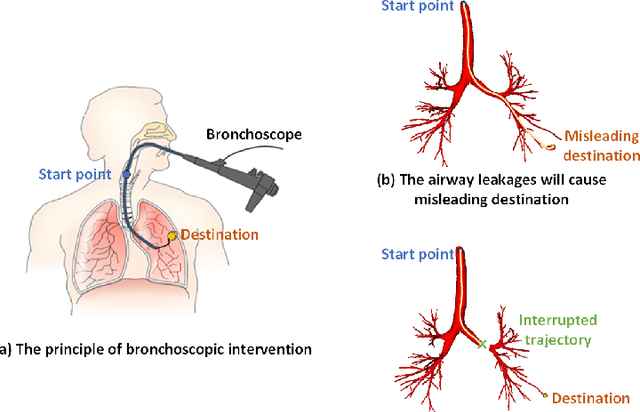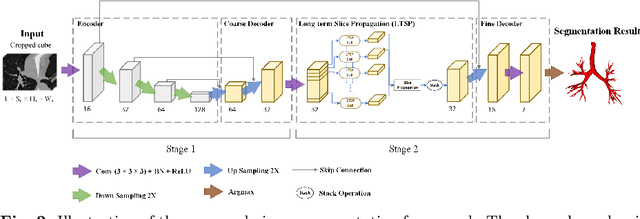Jiasheng Xu
CDFI: Cross Domain Feature Interaction for Robust Bronchi Lumen Detection
Apr 18, 2023



Abstract:Endobronchial intervention is increasingly used as a minimally invasive means for the treatment of pulmonary diseases. In order to reduce the difficulty of manipulation in complex airway networks, robust lumen detection is essential for intraoperative guidance. However, these methods are sensitive to visual artifacts which are inevitable during the surgery. In this work, a cross domain feature interaction (CDFI) network is proposed to extract the structural features of lumens, as well as to provide artifact cues to characterize the visual features. To effectively extract the structural and artifact features, the Quadruple Feature Constraints (QFC) module is designed to constrain the intrinsic connections of samples with various imaging-quality. Furthermore, we design a Guided Feature Fusion (GFF) module to supervise the model for adaptive feature fusion based on different types of artifacts. Results show that the features extracted by the proposed method can preserve the structural information of lumen in the presence of large visual variations, bringing much-improved lumen detection accuracy.
LTSP: Long-Term Slice Propagation for Accurate Airway Segmentation
Feb 13, 2022



Abstract:Purpose: Bronchoscopic intervention is a widely-used clinical technique for pulmonary diseases, which requires an accurate and topological complete airway map for its localization and guidance. The airway map could be extracted from chest computed tomography (CT) scans automatically by airway segmentation methods. Due to the complex tree-like structure of the airway, preserving its topology completeness while maintaining the segmentation accuracy is a challenging task. Methods: In this paper, a long-term slice propagation (LTSP) method is proposed for accurate airway segmentation from pathological CT scans. We also design a two-stage end-to-end segmentation framework utilizing the LTSP method in the decoding process. Stage 1 is used to generate a coarse feature map by an encoder-decoder architecture. Stage 2 is to adopt the proposed LTSP method for exploiting the continuity information and enhancing the weak airway features in the coarse feature map. The final segmentation result is predicted from the refined feature map. Results: Extensive experiments were conducted to evaluate the performance of the proposed method on 70 clinical CT scans. The results demonstrate the considerable improvements of the proposed method compared to some state-of-the-art methods as most breakages are eliminated and more tiny bronchi are detected. The ablation studies further confirm the effectiveness of the constituents of the proposed method. Conclusion: Slice continuity information is beneficial to accurate airway segmentation. Furthermore, by propagating the long-term slice feature, the airway topology connectivity is preserved with overall segmentation accuracy maintained.
 Add to Chrome
Add to Chrome Add to Firefox
Add to Firefox Add to Edge
Add to Edge